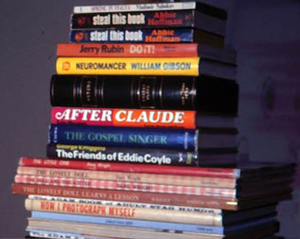Richard Thaler and Cass Sunstein
In my final year of law school, Nudge was the book that was under every policy wonk’s arm. It’s not surprising that the khaki’ed masses of Du Pont circle wanted to read the first popular book explaining the policy implications of the findings of behavioral economics.
In Nudge, Richard Thaler and the dean of dork, Cass Sunstein, define behavioral economics, and then go on to use the lessons garnered from the scholarly literature in the field to propose certain approaches to big time policy questions, like health care, education, and the environment. Behavior economics, as all good wonks know, is a subfield of economics which uses behavioral psychology findings and argues that, despite what econometricians may want to suppose, we are not purely rational actors. Instead, our economic decisions are often based on impressions, crowd psychology and precognitive feelings. If policy makers have an understanding of how these non-rational factors work in effecting our decisions, then the policy makers can create incentives to encourage certain behaviors and discourage others.
At the time of its release, this was, to many of us, very exciting, and slightly dangerous, stuff. There is a whiff of the totalitarian in using behavioral psychology to nudge people toward certain decisions, isn’t there? Sunstein and Thaler are very conscious of this and insist that their proposals are to “nudge” people towards certain choices, not force them there. But when is an economic nudge actually an ultimatum? There is no bright line between a nudge and a demand. We must walk carefully when creating government incentives for certain behaviors, economically punishing people for making unpopular lifestyle choices is something that makes me very nervous, but encouraging behavior that leads to a healthier population is something I am all about supporting.
Perhaps there is a middle ground of a “nudge” that we can find, but perhaps we should think twice about whether they are a good idea at all. Three years of the Obama administration and its obsession with the lessons of behavioral economics, there have been few victories on this front. Part of the health care reform act is based in behavioral economic ideas. As that program begins to roll out perhaps we will have more of a sense of whether or not these ideas are feasible or if the realm of human desire, and how to use it to create certain results, is still unknowable.





